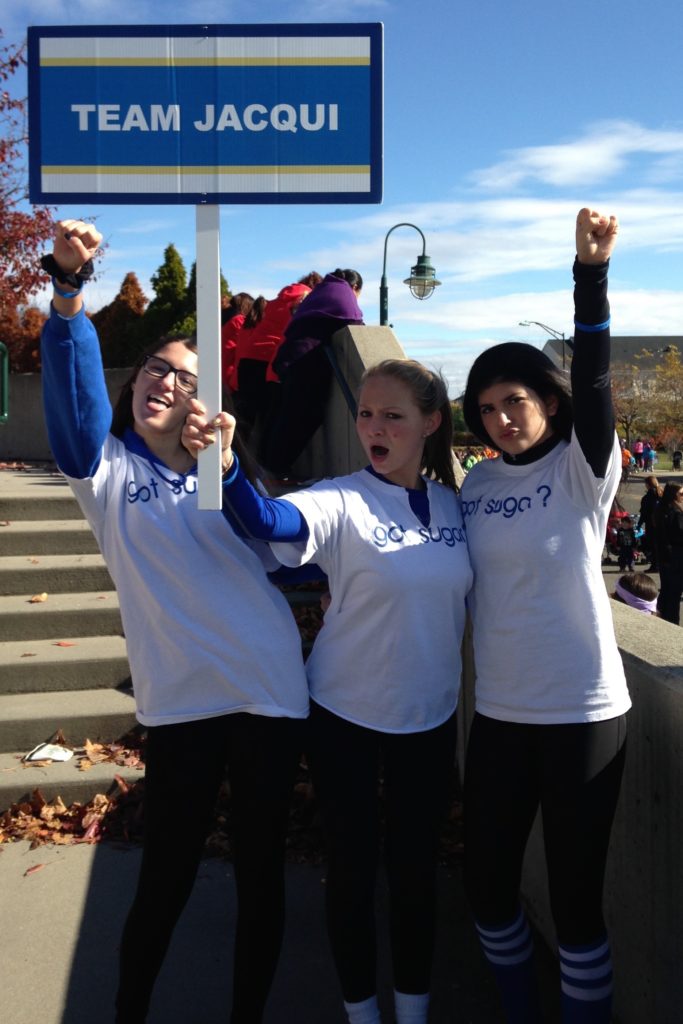#WhyIWalk – Team Jacqui
 As my vision altered between states of fogginess and murky clarity, I listened as the nurse outlined my new daily assignment. This assignment, however, had no deadline: it was an assignment set for life.
As my vision altered between states of fogginess and murky clarity, I listened as the nurse outlined my new daily assignment. This assignment, however, had no deadline: it was an assignment set for life.
When I was first diagnosed with type 1 diabetes I felt out of balance and increasingly confused as my new diabetic world was explained to me with medical jargon and mathematical equations. My regimen included testing my blood sugar with stinging finger pricks and injections of insulin everyday using a bruise-inducing syringe. My life now consisted of sporadic bathroom breaks resulting from high blood sugars, unplanned eating when my glucose level dropped, and a cycle of illness due to my now deficient immune system. I struggled adjusting to my autoimmune disease physically and emotionally.
Misrepresentations about diabetes in the media lead me to feeling isolated, scared, and guilty for my own disease. Commercials advertise for foods and supplements against type 2 diabetes, a lifestyle choice disease, without specifying the TYPE of diabetes and merely deeming the disease “diabetes.”
This phenomenon made it incredibly difficult to explain my illness to my peers who only had a one-sided view of what “diabetes” is. Often people would ask me if I could eat sugar or how I got the disease if I’m “not fat” or when was it going to go away? Sometimes, as an attempt to comfort me, people told me their cat or overweight grandpa also had diabetes.
I wish I could say that not for a second did I hesitate to use my type 1 diabetes as a platform to launch me towards charity work and services for the cause. I can’t. As I gradually transitioned through school accompanied with my new routine, I lived in a constant state of frustration. Misunderstood and overwhelmed, I drowned in self-pity and pushed away those closest to me. No one was safe from my wrath.
This toxic mindset eventually changed after attending the JDRF One Walk, and realizing that my struggles were not uncommon but shared by many diabetics everywhere. Having to share the same aches and pains, pokes and prods as my fellow diabetics made me a small part of a large consoling community.
And, now, out of the corner of my eye, no matter where I might be, I can always spot a fellow diabuddy’s insulin pump. Just seeing a glucose meter test strip on the ground comforts me and cues me into thinking: “he’s one of us.” Having another Type-One high-five me after checking my blood sugar sends a rewarding blush across my face. It is a shame that so many are a part of the diabetic community, but knowing we share our ailments with millions is as reassuring as it is unfortunate.
I walk because my hope for the future is to never have a diabetic feel alone in his or her battle.